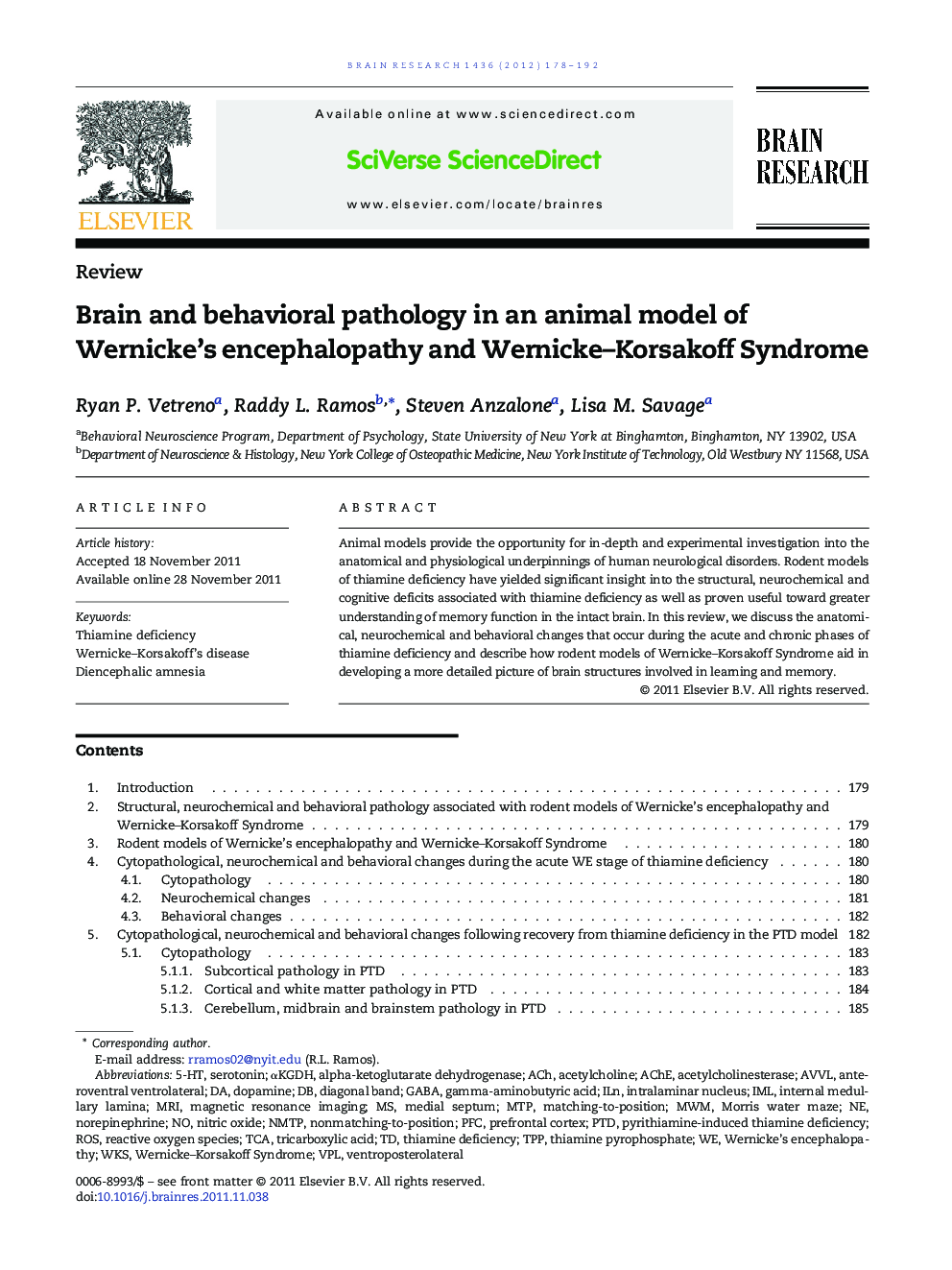| Article ID | Journal | Published Year | Pages | File Type |
|---|---|---|---|---|
| 6264563 | Brain Research | 2012 | 15 Pages |
Abstract
Animal models provide the opportunity for in-depth and experimental investigation into the anatomical and physiological underpinnings of human neurological disorders. Rodent models of thiamine deficiency have yielded significant insight into the structural, neurochemical and cognitive deficits associated with thiamine deficiency as well as proven useful toward greater understanding of memory function in the intact brain. In this review, we discuss the anatomical, neurochemical and behavioral changes that occur during the acute and chronic phases of thiamine deficiency and describe how rodent models of Wernicke-Korsakoff Syndrome aid in developing a more detailed picture of brain structures involved in learning and memory.
Keywords
Related Topics
Life Sciences
Neuroscience
Neuroscience (General)
Authors
Ryan P. Vetreno, Raddy L. Ramos, Steven Anzalone, Lisa M. Savage,
